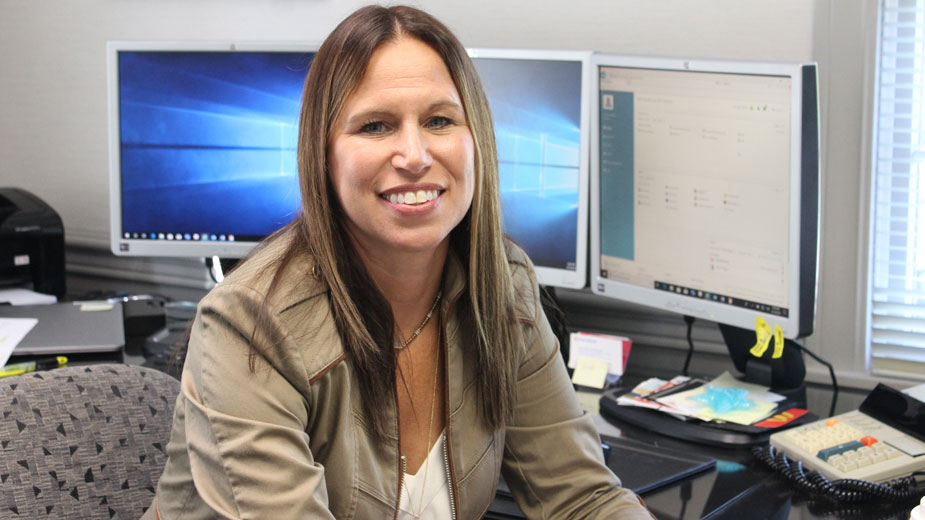New Software? Make Time for Training
YOUNGSTOWN, Ohio — Putting new software in place is no small undertaking. It can be a lengthy, costly process but in the long run it can be a big advantage for businesses. That’s all the more reason to make sure the implementation process is done properly.
“It’s a huge commitment of time. It’s a huge commitment of resources,” says Tracie Stephens, principal at SSB CPAs and Strategic Advisors. “Communicating expectations in advance and following through, in my opinion, is what helps businesses have a successful implementation. I’ve seen businesses invest time and resources and never implement it. It’s a waste of $50,000 or $60,000 because they didn’t really understand the commitment.”
While SSB doesn’t provide clients with software directly, the Canfield accounting firm has made recommendations to clients and encouraged them to move onto new software as they outgrow existing programs.
When changing systems, the most common issues companies face are push-back from employees and concerns about data, says Craig Fowler, director of customer success at Auto-soft Inc., based in West Middlesex, Pa. The company develops software for car dealerships.
Before a software launch, Autosoft makes two “data pulls,” moving the client’s information from their existing system to the new one. The first comes about two weeks before the change, allowing clients to ensure that everything is correct and where it’s supposed to be, and the second right before the changeover to get what’s been added since the first pull.
“If a dealership has been around for years, there’s all that service history. Everything a dealership does is centered on building lifelong relationships with customers,” Fowler says. “Bringing that information is key.
“A dealership may have used only one piece of software for decades and now you’re coming in and changing what they’ve always known,” he continues. “That’s where human-to-human contact and effective training comes in.”
When a dealership switches over to an Autosoft program, the company provides a week of one-on-one training and consultation, followed by check-ins with key dealership employees afterward.
“That’s something to consider: how much training is involved and who needs to do it,” SSB’s Stephens agrees.
After software has been put in place, continuous training is common, whether from developers or internally. Most software is updated frequently, though the changes are minor. Some platforms make a few big changes annually and roll them out all at once.
“They release videos of what’s new, so I watch a lot of that to understand what to do. They provide free access to that,” says Gregory Struna, project architect for Strollo Architects, Youngstown. “The base concept of the program never really changes. They’re just fine tuning.”
Strollo Architects primarily uses AutoCAD and Revit for design and modeling work, he notes.
At SSB, training on updates is usually done as part of monthly staff meetings when changes are made, Stephens says, along with a single company meeting at the beginning of the year.
“For us, those updates are based on tax law changes or new pronouncements that are incorporated. … Every January, we go through our software and take four hours to explain to the team what the changes are,” she says. “We’re not changing the product, but it’s being continuously updated.”
More recently, she points to the accounting firm’s switch to a cloud-based network as reason for on-site training. The software remained the same, but its storage location was moved from an in-house server to a remote location. It took SSB’s network down for a long weekend.
“We spent that [Monday] doing training to get everyone understanding how it works and then the next day getting everyone into the new system,” she says. “We talked about how you contact support. We made sure our mobile devices worked with it. We made sure the printers worked with it. It created a lot of downtime that week, but in the long run we feel it’s worth it.”
Further, mobile devices are frequently becoming part of the implementation process as multifactor authentication is gaining popularity with developers. In this process, users are sent a text or email when they log into the program to confirm their identity.
“That can create issues for businesses because now a mobile device is required for your job,” she says. “There has to be something provided so they can log in and use the software.”
Strollo’s Kevin Willis notes that while training sessions can be useful, first-time users often benefit from hands-on experience. Many interns, he says, aren’t perfectly versed in AutoCAD or Revit and learning the ins and outs simply comes from experience.
“Some of them teach themselves so they aren’t behind. One intern was a little uneasy using it, so we just gave her work and helped her through it,” he says.
But the biggest factors, they all agree, in a successful software implementation is having employees on board and understand the reasons behind the change.
“Make sure they understand the company is growing and this is why they need to do this so they don’t go back to the old way of doing things,” Stephens says.
Pictured: Every January, SSB CPAs and Strategic Advisors has a staff meeting that covers software changes, says principal Tracie Stephens.
Copyright 2024 The Business Journal, Youngstown, Ohio.



